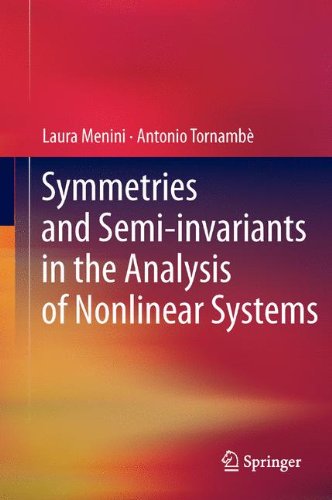

Most ebook files are in PDF format, so you can easily read them using various software such as Foxit Reader or directly on the Google Chrome browser.
Some ebook files are released by publishers in other formats such as .awz, .mobi, .epub, .fb2, etc. You may need to install specific software to read these formats on mobile/PC, such as Calibre.
Please read the tutorial at this link: https://ebookbell.com/faq
We offer FREE conversion to the popular formats you request; however, this may take some time. Therefore, right after payment, please email us, and we will try to provide the service as quickly as possible.
For some exceptional file formats or broken links (if any), please refrain from opening any disputes. Instead, email us first, and we will try to assist within a maximum of 6 hours.
EbookBell Team

0.0
0 reviewsSymmetries and Semi-invariants in the Analysis of Nonlinear Systems details the analysis of continuous- and discrete-time dynamical systems described by differential and difference equations respectively. Differential geometry provides the essential tools for the analysis, tools such as first-integrals or orbital symmetries, together with normal forms of vector fields and of maps. The use of such tools allows the solution of some important problems, studied in detail in the text, which include linearization by state immersion and the computation of nonlinear superposition formulae for nonlinear systems described by solvable Lie algebras.
The theory is developed for general nonlinear systems and, in view of their importance for modeling physical systems, specialized for the class of Hamiltonian systems. By using the strong geometric structure of Hamiltonian systems, the results proposed are stated in a quite different, less complex and more easily comprehensible manner. Throughout the text the results are illustrated by many examples, some of them being physically motivated systems, so that the reader can appreciate how much insight is gained by means of these techniques. Various control systems applications of the techniques are characterized including:
· computation of the flow of nonlinear systems;
· computation of semi-invariants;
· computation of Lyapunov functions for stability analysis.
Symmetries and Semi-invariants in the Analysis of Nonlinear Systems will be of interest to researchers and graduate students studying control theory, particularly with respect to nonlinear systems. All the necessary background and mathematical derivations are related in detail but in a simple writing style that makes the book accessible in depth to readers having a standard knowledge of real analysis, linear algebra and systems theory.